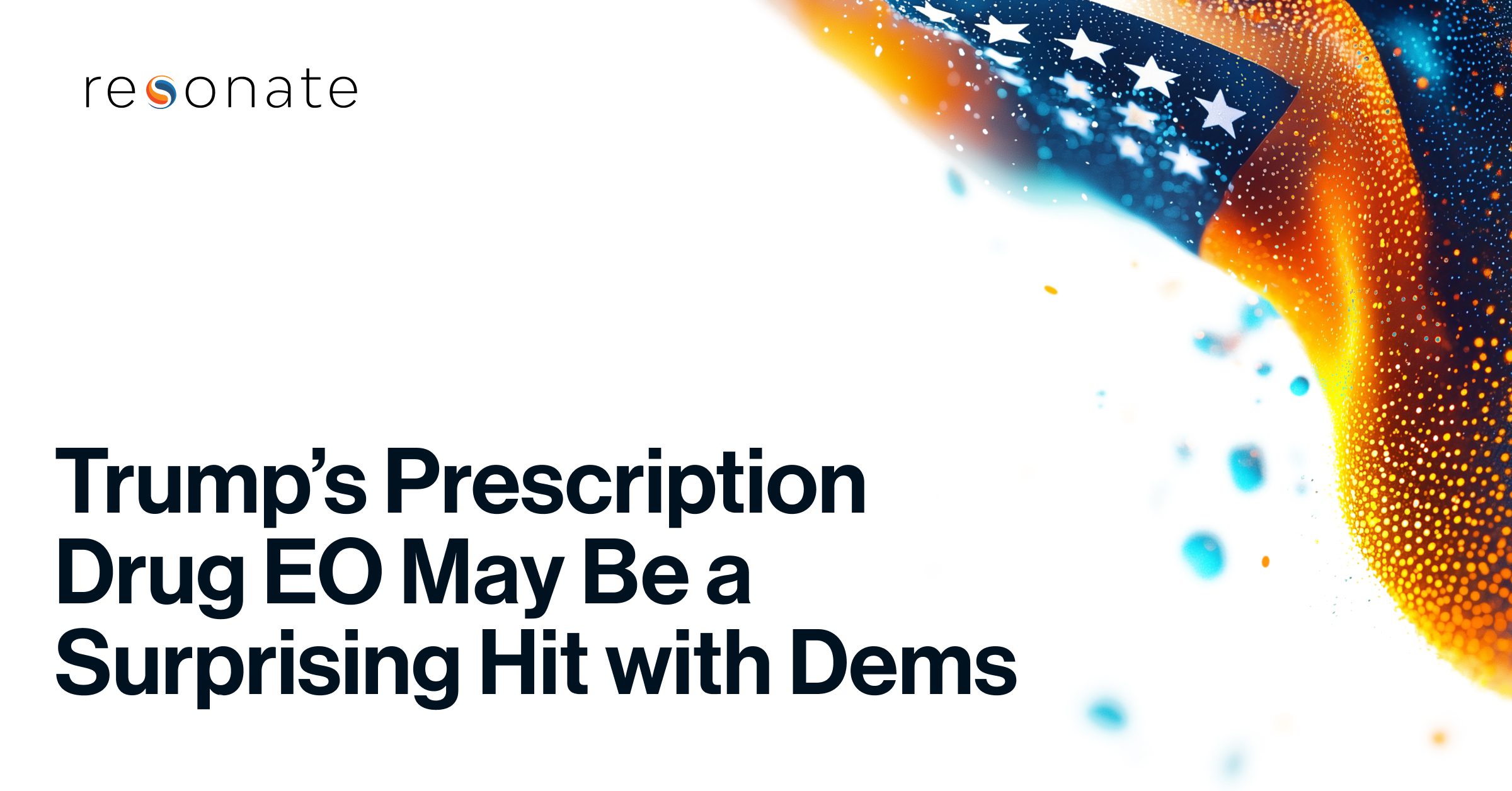In recent weeks, the Trump administration’s attention has turned to prescription drug costs. On April 15, President Trump signed an Executive Order directing the Department of Health and Human Services to lower the cost of medication for consumers. The new EO builds on not just Trump’s own policies and actions during his first term in office, but also on Biden-era legislation like the Inflation Reduction Act, which included a Medicare negotiation program.
While the efficacy of this latest directive remains hotly debated by experts and the media, the cost of healthcare—including prescription drug prices—has been a known thorn in the side of millions of consumers for years. As a result, this latest measure is likely to be very popular among the numerous voters who have wanted relief from wallet-wrenching prices. In this blog, we’ll take a deeper dive into the Prescription Rx Advocates with the help of the Resonate AI-powered data engine, rAI.
Who Are the Prescription Rx Advocates?
This audience, which makes up 31% of the population, or nearly 74M adults, supports the improvement of prescription drug safety, prices, and access, believes medication affordability is a serious problem in the community, and agrees with prescription drug price capping.
These consumers are either younger or older, not middle aged: 47% are between the ages of 18 and 44, and 33% are 55+. This makes sense considering that older adults are more likely to need medications and younger adults are more likely to be either at the start of their careers or have children, both of which mean they have less disposable cash for things like expensive prescriptions. This view is bolstered by their household income data, which is very skewed towards the lower end: a significant 74% of this audience has an HHI of $100K or less.
They’re also skewed in terms of party. According to rAI, 74% identify as Democrats or as Independents, suggesting this is an issue that is divided along partisan lines, even if it appears to be generally “for the good of all” on the surface. This begs the question of how Republicans will react to President Trump’s cost-saving measures and underscores the need for AI-powered data in campaigning.
Perhaps unsurprisingly, for 54% of this audience, healthcare costs and debt are major concerns in the short term. In fact, all of their top three worries are financial. In addition to the cost of medical care, 53% are concerned about rising fuel and energy prices, and half are bothered by the fact that wage increases haven’t kept up with the cost of living in the US.
How Can You Reach These Voters?
Over 50% of this segment spends 11 or more hours a week watching streaming television. Their second favorite form of media is traditional TV, with 42% spending 11 or more hours a week watching various programs, and their third favorite is Internet videos, with 13% spending 21 or more hours per week watching. Perhaps surprising for the representation of Millennials and Gen Zers in this audience, the Prescription Rx Advocates are notably un-engaged with social media. A whopping 63% spend less than 11 hours per week scrolling. Interesting, 35% do spend some time—up to 11 hours per week—reading digital newspapers.
Top TV Networks:
- E! Entertainment
- Freeform
- MSNBC
Top Paid Streaming Subscriptions
- Starz
- HBO Max (with ads)
Top Newspapers Read:
- The Washington Post
- The New York Times
- USA Today
And as you’re preparing creative and messaging for ads they’ll see while they’re engaging with these forms of media, keep this audience’s personal values in mind:
- Caring for Nature: May, or may desire to, emphasize the preservation of the natural environment. To these voters, life is about protecting the environment.
Tip: Consider using themes of unity with nature, safekeeping, and conservation in your creative and messaging.
- Equality: May, or may desire to, emphasize the equality and protection of all people. Life is about social justice.
Tip: Consider using themes of equality, fairness, or tolerance or highlight philanthropy and social activism activities in your creative and messaging.
- Tolerance: May, or may desire to, accept and understand individuals who are different from themselves. Life is about broadmindedness and accepting the beliefs and behaviors of others.
Tip: Consider using themes of acceptance, inclusion, harmony, and diversity in your creative and messaging.
The issues that face Americans today are incredibly complex, and the deep divide between ideologies has overtaken even seemingly innocuous “common-good” measures, like lowering prescription drug prices. Keeping up with evolving consumer sentiment and crafting the right messaging for a specific audience requires professionals to have the right data to be successful.
Resonate’s premium Politics and Advocacy data simplifies the process of engaging with voters and advocates through unique, real-time data that is continuously updated. This comprehensive dataset—covering voter intent, behavior, ideology, values, motivations, and opinions—serves as a powerful asset for driving campaign success.
In addition to providing the continuously updated insights you require for success, Resonate is a trustworthy, experienced partner who will empower you to build, activate, and win campaigns as fast as you can say “viral video.”
See the Resonate difference in our quick, no-nonsense buying guide.



